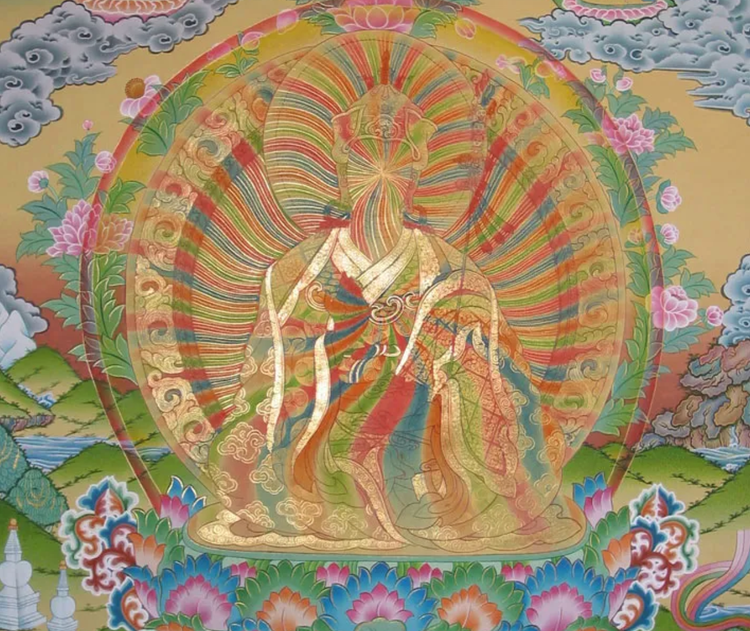There Is No Matter

A Metaphysical Reframing of Appearance, Energy, and Awareness
Western science starts with a flawed assumption about reality: that the world is made of matter—solid, enduring, and fundamentally real.
This belief is so deeply ingrained it hides in plain sight. It underlies every discipline from biology to neuroscience, every conversation about consciousness and life. But it doesn’t hold up—not to physics, not to logic, and when examined, not even to direct experience.
We’re not living in a world of things.
We’re living in a field of energetic expression.
Let’s walk through the argument step by step.
1. Matter has no inherent existence
The first problem is ontological: matter doesn’t actually exist the way we think it does.
Physics, especially quantum mechanics, has already torn apart the classical idea of matter as fixed, solid, or fundamentally divisible. Particles behave like waves. Properties like location or momentum exist only in relation to observation. What we find at the smallest scale is not substance, but probability fields and relational patterns.
Yet we still talk as if there are “things” out there with their own internal essence. Trees. Rocks. Neurons. Brains. We assume these things have boundaries, identities, and properties that are intrinsic and discoverable.
But everything we call “a thing” is a conceptual freeze-frame of a dynamic, interdependent process. No object exists independently. No property exists apart from context. And no perception of form arises without a perceiving lens.
2. What we call the world is a sensory interface
Every being experiences the world through a conditioned system of perception. A human sees light in a narrow band, hears within a fixed frequency, and thinks in conceptual patterns shaped by language and memory.
What we call “reality” is a sensory user interface—a functional rendering of energetic activity that appears in a way that’s relevant to a particular sensory system.
A bat does not fly through the same world a human walks through. A jellyfish, with no brain and no central nervous system, doesn’t live in a world of objects. Neither does a bacterium. Nor a photon.
There is no "one world" out there to experience. There is no fixed “matter.” There are only appearances, arising interdependently within and through the conditioned lens of consciousness.
3. Energy is not substance
Some try to salvage materialism by trading the word “matter” for “energy.” But the fundamental flaw remains. Energy, like matter, is not a thing, it’s a description of relational activity.
There is no “energy” apart from form. No “force” that exists on its own. These are abstractions. The energetic expression that we think exists is really continuous movement and flux and interplay that is always observed within a frame of awareness.
Even when we speak of energy fields, we’re still describing co-arising phenomena that have no standalone identity.
There is no metaphysical foundation in matter or energy. Only the fluid, ceaseless pattern of energetic expression in all its variety.
4. All appearances are the energetic expression of awareness
If there is no self-existing matter, and no enduring substrate of “energy,” we’re left with something much more subtle yet far more foundational.
Every energetic appearance—every form, sensation, thought, and even world system—is not arising as an object within awareness, but rather is the energetic expression of awareness itself. There’s no distance between ground of awareness and the energetic display. No border between emptiness and appearance. There is only the illusion of separation—held together by perception and naming.
In Dzogchen, we speak of rigpa zhi, the ground of awareness—not as a static container, but as the indivisible basis of all experience, inseparable from its own energetic expression, known as rigpa tsal.
This is not a duality. The “ground” and the “display” are one continuous field of awareness. When we speak of the ground, we speak of the unfindable, empty aspect. When we speak of expression, we speak of the unceasing vivid clarity that gives rise to appearances. They are not two separate things, but one inseparable field.
5. The ground is empty, expressive, and responsive
What appears as the world is not separate from the knowing of it. And the knowing aspect is not located “inside” a brain or subject. This entire field of appearance is the ground expressing itself.
This ground is:
- Empty – It's not a substance. Not a thing. Nothing to find
- Unceasing luminous expression – Naturally radiant, clear, and vivid.
- Responsive – Not passive. Not inert. The energy of this display is fluid and alive.
These aren’t three different parts. They’re not layers of experience. They are aspects of what is always already the case.
The mistake is imagining some primordial awareness “behind” appearances. There is no behind. It is awareness—empty in essence, luminous in appearance, and responsive by nature.
That’s not mystic chop suey. It's the structure of reality when seen without conceptual overlays.
6: Inseparability is the key to resolution
Awareness and its energetic expression are not two. Like waves and water, fire and heat, or sun and rays—they are never separate.
But we don’t see it.
We live entirely inside the expressive play—inside the energetic patterns, the appearances, the identities, the concepts, the stories. From within that realm alone, everything feels fragmented. Full of tension. Contradictory. We’re caught trying to resolve complexity on the level of complexity.
That’s why the ground matters.
Not as an escape. Not as something outside or behind. But as the context that reveals the play for what it is: spontaneous, dependent, vivid, and ultimately empty.
When the ground is recognized, expression finds its place. There is no longer a contradiction between awareness and the world, form and emptiness, clarity and confusion.
All the appearances—form, sensation, thought, even suffering—are no longer problems to be fixed. They are the expressions of the ground experienced through the lens of consciousness. They are the natural display of dependent origination—without reification, without grasping, without otherness.
Resolution doesn’t mean everything disappears. It means recognizing the true nature of reality. And from recognition comes release.
7. “Matter” is a label on the play of expressive energy
The idea of “matter” is a conceptual convenience—a story we place after the fact, once experience has already arisen.
We look at the dynamic, interdependent play of appearances and say:
“That’s a tree.”
“That’s a rock.”
“That’s me.”
But these aren’t self-existing things. They are reified expressions, the looping result of labeling, memory, and habitual perception.
A “tree” is not a bounded object. It’s a momentary name given to a dynamic energetic pattern of soil, water, photosynthesis, atmosphere, and a relational perception of a perceiving consciousness. And even that is just surface.
What we call “matter” is just the energetic expressive of awareness mistaken for something external and solid. We mistake the content of experience as something that exists, when in reality it’s the radiant face of the ground itself—inseparable from its empty nature and responsive energy.
8. The world is inseparable expression, not independent stuff
There is no world “out there” made of matter.
There is no inner “self” made of mind.
There is only the inseparable play of the ground and its expression.
This is a radical metaphysical account of what’s already happening, if we stop imposing conceptual structures onto it.
Once we recognize that appearances are not separate from awareness, the contradictions that modern science tries so hard to resolve simply fall away. There’s no longer a hard split between subject and object, mind and body, form and emptiness.
And this has consequences.
Because if the world isn’t made of solid things—if it’s not composed of independent objects—then there’s nothing to grasp. Nothing to control. Nothing to defend. Nothing to fix.
That’s not a nihilistic determination. That’s reality recognized within the view of ever-present freedom.
It doesn’t mean the world disappears. It means we find alignment with the way things are. Things are not less real, they are more workable.
And that’s where the path begins: Not in escaping the display, but in recognizing its nature. Not in rejecting appearances, but in seeing through them.
The ground and the energetic play have never been two. They only appear that way.
There is no matter.




